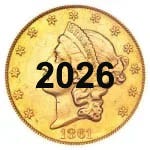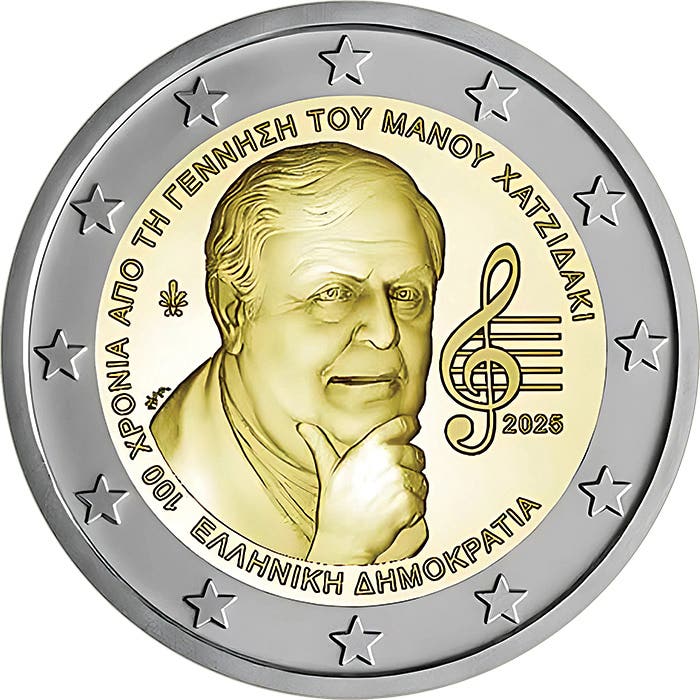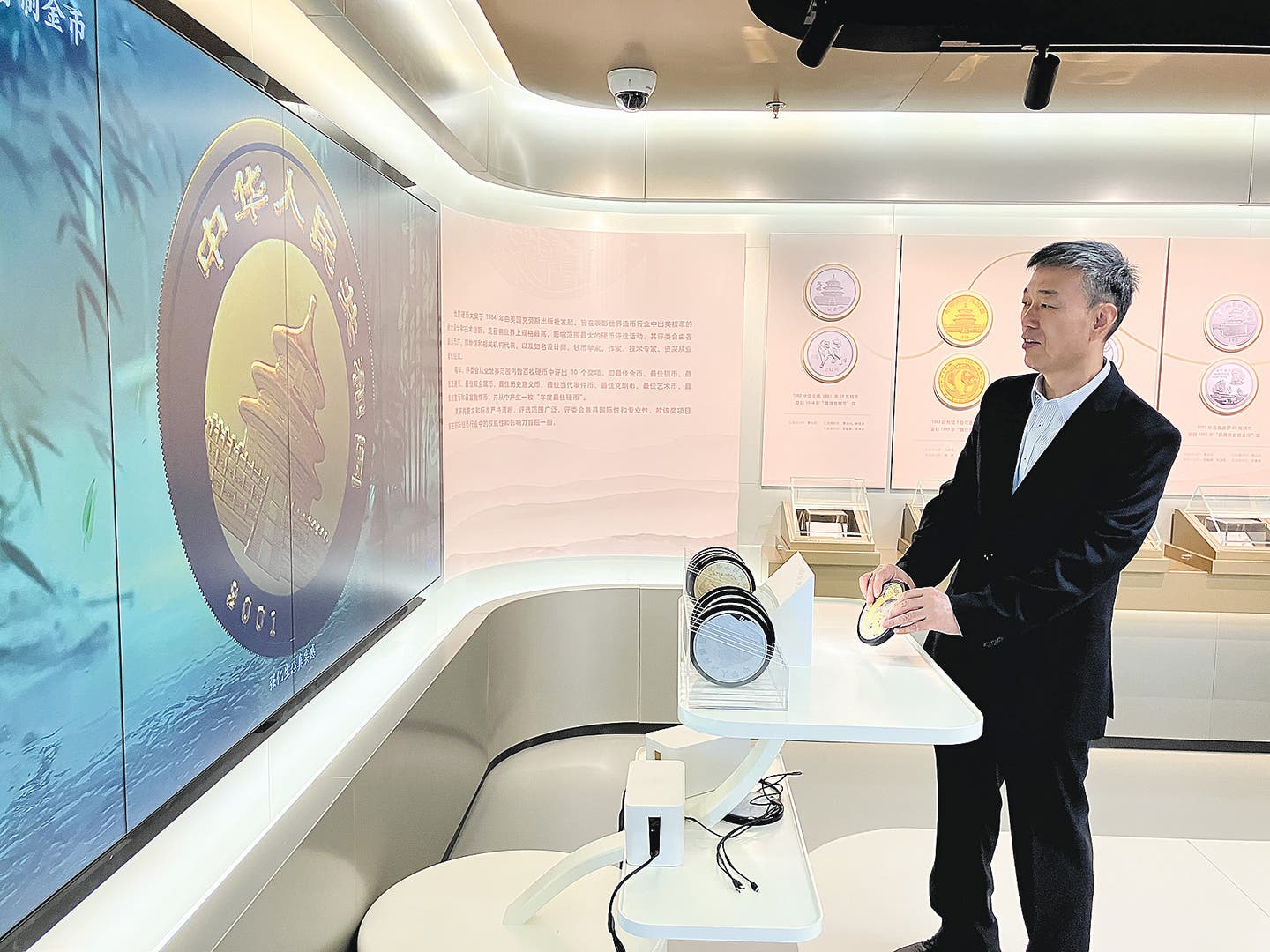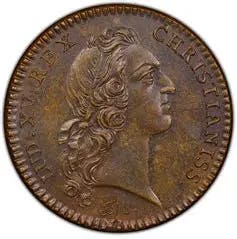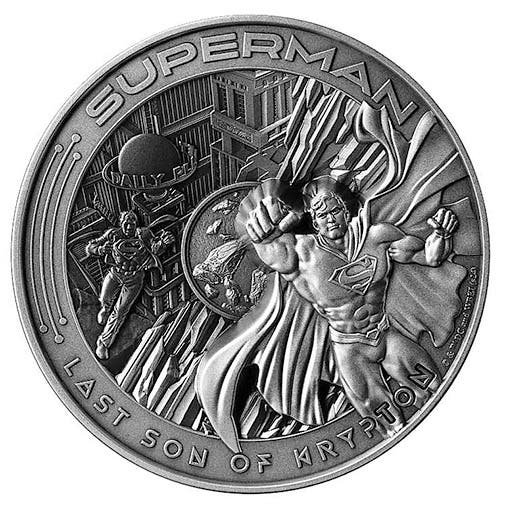2-Euro Commemoratives: A Coin with Over 500 Faces
For many years, not a day has gone by when countless Europeans share blurry photos of damaged 2-euro coins from their change on social media. Phrases like “Is this a…
For many years, not a day has gone by when countless Europeans share blurry photos of damaged 2-euro coins from their change on social media. Phrases like "Is this a minting error?" or "What's the value of this coin?" are commonly seen alongside these images. The response is almost invariably: 2 euros. This is because the coin is neither a minting error nor particularly rare. Nevertheless, rarities occasionally find their way into everyday transactions, and indeed, it's rumored that in 2023, the most valuable 2-euro coin in the world, featuring the U.S. film icon Grace Kelly and dating back to 2007 in Monaco, surfaced in Germany, after a collector accidentally spent this rarity.
While the repetitive questions from numismatic newcomers might test the patience of professional numismatists, the enthusiastic interest of a broad cross-section of the population in the collector's value of circulating coins is the best thing that could have happened to European numismatics in the 21st century. The fact that millions of Europeans are constantly on the lookout for numismatic treasures serves as compelling evidence of the Euro's appeal as a collecting field, particularly in the case of the 2-euro circulating commemorative coins introduced in 2004. These coins will mark their 20th anniversary next year, having already achieved another milestone: in September 2023, the 500th design was released on what's known as the "circulating coin with commemorative character." In short, 2-euro commemorative coins have become a remarkable success story.
Looking Back at the Road to the Euro
Although the concept of a European currency had been discussed as early as the 1960s, it didn't truly gain traction until the 1980s. German reunification played a significant role in this process, as the Deutschmark had become the dominant currency in Europe, while other currencies, like the French franc, struggled under the Bundesbank's strict commitment to monetary stability. As a result, France in particular, advocated for the integration of the German mark into a common currency area.
The initial steps toward the euro were outlined in the Maastricht Treaty, which established stability criteria and further agreements. The first significant milestone was the removal of capital controls between the European Community (EC) member states. Subsequently, in 1994, the European Monetary Institute was established as the precursor to the European Central Bank. Its primary task was to oversee the technical and organizational aspects of the currency transition. By mid-1998, it had assumed monetary policy responsibilities, taking over from the national central banks.
Commemorative Coins: Join Forces or Do Your Own Thing?
Before the introduction of the Euro, the success story of the 2-euro commemorative coins was by no means foreseeable. Many years before bidding farewell to the Deutschemark, the French Franc, and their European bank note and coin counterparts, a passionate debate had ensued between governments and their affiliated mints. The big question was: should there be common commemorative coins alongside the introduction of a shared currency?
Dealers and collectors' associations there advocated for the creation of standardized European commemorative coins that could be accepted as valid currency across all of Europe. However, numerous mints in other EU member states opposed this idea, preferring to retain control over their own commemorative coinage and pursue independent paths. The dominant minting powerhouses, notably Monnaie de Paris and the Austrian Mint, wished to continue doing their "own thing," while other countries were intrigued by the idea. Since national coins would only hold value within their respective countries, critics labeled them as "second-class euros." It appeared that the matter of commemorative coins had been overlooked when the decision regarding the euro was made and had not been addressed in the Coinage Act.
Following a hearing before the European Commission, where proponents of nationally autonomous commemorative coin regulations voiced their opinions, a compromise was reached at the European level - and it proved to be spot-on: After a two-year transition period, the obverse sides of the 2-euro coins were allowed to be altered for the first time in 2004. 2-euro commemorative coins were born, which would be universally valid throughout Europe, while all other commemorative coins would only serve as a means of payment within the countries of issue. Everybody was happy – but before the success story was able to pick up pace, collectors all across Europe needed to show some patience.
Introduction of Euro Coins
As anticipation for the forthcoming coinage and commemorative coins continued to mount, an important step needed to be made: the actual introduction of the euro in 1999. Initially, it was introduced in digital form, as "book money," allowing national currencies to remain in circulation as sub-units of the euro for an additional three years. The active phase of introducing the euro kicked off in the summer and autumn of 2001. As part of the "frontloading" process, stores and government offices began receiving coins and bank notes of the new currency starting in September 2001. The general public had their first encounter with the new currency on Dec. 17, 2001, in the form of small bags known as "starter kits," containing the equivalent sum of coins from the respective previous currency (in Germany, it was 20 marks or 10.23 euros). Many collectors still vividly recall this day, especially the long lines at distribution points. The starter kit also became a popular Christmas gift.
The final step in the euro's introduction coincided with New Year's Eve celebrations on Dec. 31, 2001, and Jan. 1, 2002. At the stroke of midnight, euro bank notes became available at ATMs across Germany and Europe, while the issuance of bank notes in Deutschemark was strictly prohibited from that moment onward. In the days and weeks that followed, a rush on banks and savings institutions ensued, as most Germans were eager to get their hands on the new currency immediately and bid farewell to their "sleeping coins" (a term of endearment for Marks and Pfennigs that had been lying around). Furthermore, it remained possible to make payments with coins and bank notes in the "old" currency until Feb. 28, 2002.
The Birth of a Numismatic Legend
On Nov. 23, 1998, the European Council decided that the issuance of "commemorative coins intended for circulation" should be subject to a moratorium during the initial years of the new bank notes and coins' circulation. The purpose was to familiarize Europeans with their new currency. This moratorium ended on Jan. 1, 2004, when the eurozone countries finally began issuing their own 2-euro commemorative coins. Shortly after the initiation of numismatic celebrations on 2-euro coins, Greece took a spirited leap by using the 2004 Olympic Games in Athens as an ideal opportunity to issue its first 2-euro commemorative coin.
Since the release of the first 2-euro commemorative coins in 2004, collecting them has rapidly become one of the most popular topics in European numismatics. An increasing number of countries have seized the opportunity to issue at least one 2-euro commemorative coin every year. The appeal of this collecting field lies in its accessibility – the minimum investment is just two euros, and these coins can also be easily obtained at supermarket checkouts.
Joint Issues: Commemorating Golden Moments of European History
In addition to designing national commemorative motifs, eurozone countries can also collaborate on "joint issues" to commemorate events of special historical significance for Europe. In these cases, the motif is identical across all participating states, with only the country name being adapted. This concept was first implemented in 2007 to mark the "50th Anniversary of the Treaty of Rome." Subsequently, there were joint issues in 2009 for the "10 Years of Economic and Monetary Union" and in 2012 for the "10th anniversary of the introduction of the Euro." In 2015, the European flag was commemorated, and in 2022, the Erasmus program. Collectors find these 2-euro joint issues particularly enticing due to varying circulation numbers among different countries' releases. Commemorative coins from Luxembourg, Finland, and Malta, in particular, are highly sought after.
Approval Process: Keep an Eye on Your Neighbors
When a eurozone member decides on a theme for a 2-euro commemorative coin intended for circulation, it must clear a significant hurdle. After informing the European Commission about the project three months before the planned issue date, any other euro area member can submit a written statement to the Council and the Commission within seven days, raising objections if they have well-founded concerns that the coin might lead to "adverse reactions" among their citizens. This has occurred on several occasions in the past, such as with a proposed Belgian 2-euro commemorative coin commemorating the Battle of Waterloo, where the defeated French sought to influence the decision. Upon formal approval of new issues, this decision must be published in the Official Journal of the European Union.
Small States: Numismatic Dwarfs can Fetch Gigantic Premiums
Apart from eurozone members that are also part of the European Union, four other third-party countries use the euro: Andorra, Monaco, San Marino, and the Vatican City State. These countries have established monetary agreements with the EU based on earlier bilateral agreements with their larger neighbors. They are not allowed to participate in joint issues, but they can independently adopt a joint issue's design. To date, this has occurred only once when San Marino issued a 2-euro commemorative circulating coin in 2012 to mark the 10th anniversary of the euro's introduction.
Face Value: The Most Important Circulation Coin in Europe
The 2-euro face value was deemed ideal for commemorative coins for several reasons. It was the largest coin in circulation at the time in terms of face value and size. Introducing an additional coin with a different face value was not desired by the eurozone countries, especially since some states had already issued national commemorative coins with nominal values of 5- or 10- euros. Additionally, the bimetal technology favored 2-euro coins, as this alloy is highly resistant to counterfeiting. Finally, the coins were designed to be easily recognizable and accepted in everyday life by adopting the same value and coloring as the already familiar 2-euro coins.
Mintages: Between Rarities and Mass Production
Although the number of 2-euro commemorative coins in circulation has increased significantly in recent years, the European Commission ensures that only a small percentage of all coins in circulation are 2-euro commemoratives. Complex rules have been defined by the EU to limit the maximum issuing volume for each country. At most, 0.1 percent of the total number of 2-euro coins in circulation in the euro area can be allocated to 2-euro commemorative coins. In the case of significant events, an extension of up to 2 percent is possible. Additionally, a single country can issue a maximum of 5 percent of its 2-euro coins as commemorative coins in circulation.
In the event of a globally significant occasion, individual euro countries can deviate from their actual mintage quantities. However, in return, they must refrain from issuing their own commemorative coins in circulation for the following four years. This happened immediately after the release of 2-euro commemorative coins in circulation, as Greece was permitted to produce a remarkable 35 million copies of its Olympic coin, more than what Germany typically contributes to joint issues with five mints. Greece had to wait for a while before following suit in 2010, setting its planned mintage at 2.5 million pieces.
Initially, the collecting field was quite manageable as the issue of 2-euro commemorative coins was limited to one motif per year. However, this number increased to two thanks to a regulation passed on July 4, 2012. Eurozone states can now issue a common commemorative coin on "themes of the highest European importance." In theory, this means up to three motifs per country per year could be possible. Additionally, in purely theoretical terms, a country could even issue an extra 2-euro commemorative coin if it temporarily had no head of state or had only one at the time. Based on this premise, the Vatican released a separate 2-euro coin in 2013 to mark the vacancy of the Holy See.
Topics: How to Explore Europe on Coins
Concerning potential themes, the Commission has outlined a relatively narrow framework for eurozone members. Eligible themes include "political events that represent a milestone in European integration, exceptional sporting events like the Olympic Games, or commemorations of individuals whose life's work holds central importance." The European Commission stresses that anniversaries or monuments must be "historically significant," and only "very important events or personalities" should be commemorated on 2-euro commemorative coins in circulation. All other commemorative occasions should be handled within the scope of national commemorative coins, according to EU regulations.
The 2-euro coin is truely a coin type with many faces: On 7 out of 10 commemorative coins, anniversaries have been celebrated, including an equal balance between the birthdays of prominent figures and national events. The themes also encompass regions, plants, cultural heritage sites, and universities. These coin themes invite people to rediscover the European Union and its member states - and thanks to the widespread circulation of euros across Europe, this can now even be done at the supermarket checkout.
Outlook: A Collection Area That Is Here to Stay
Admittedly, collectors of 2-euro commemorative coins now have their hands full. The circle of eurozone countries has steadily grown, with 4 micro-states and, following Croatia's adoption of the euro, a total of 20 more countries now using the euro. Just this year, 36 different designs are being minted, many of them in more than one version: blister packs or coin cards, uncirculated or proof quality - anyone wanting to own all these collector's items must dig deep into their pockets.
However, coin enthusiasts are venturing into a collecting field with a promising future. While there are the usual price fluctuations in the world of 2-euro coins, and certain themes or countries may fall out of favor with collectors while new trends emerge elsewhere, the demand for 2-euro commemorative coins has been strong for many years. Moreover, many subcategories have recently shown remarkable increases in value - just think of the coins from Monaco or, in general, the strictly limited proof quality commemorative issues from Italy, Greece, or Slovakia.
Of course, in such a popular collecting field, there are certain excesses that should be questioned. Does France really need to issue its 2-euro commemorative coins in five different coin cards? Is it in line with the European spirit when individual countries like Monaco do not mint their commemorative coins for circulation? Or when it's simply impossible for ordinary collectors to obtain a specimen at the initial release price from the official point of sale?
The European Commission should keep an eye on developments in the exciting world of 2-euro coins to prevent this collecting field from suffering the same fate as other former rarities that have now vanished into obscurity. The authorities in Brussels have also recently shown that they do not endorse all numismatic gimmicks and have expressed criticism of the issuing policies of countries like Luxembourg or Malta, which feature changing mint marks and surprising special editions.
Because, at the end of the day, the secret of the success of 2-euro coins as a collecting field is that they are easily accessible to the general population - and that (at least theoretically) it is possible to get a genuine Grace Kelly from Monaco at the Aldi checkout.


